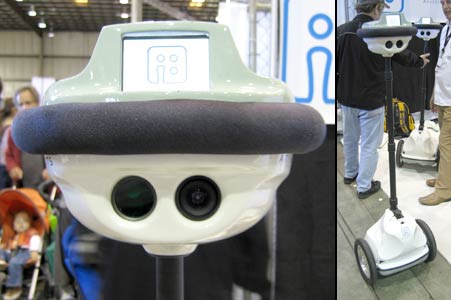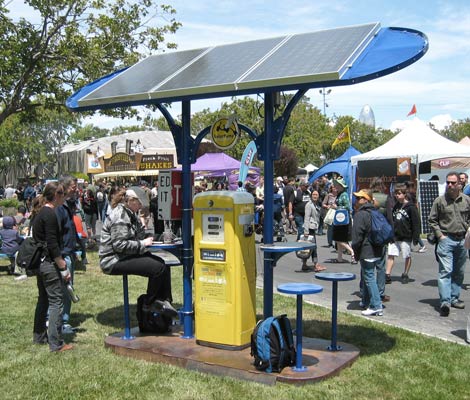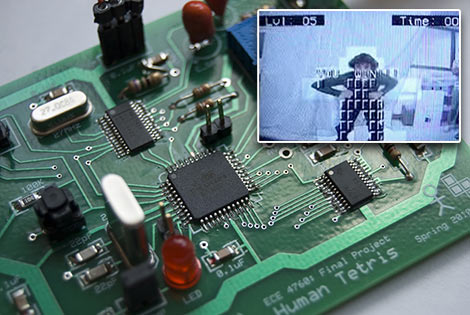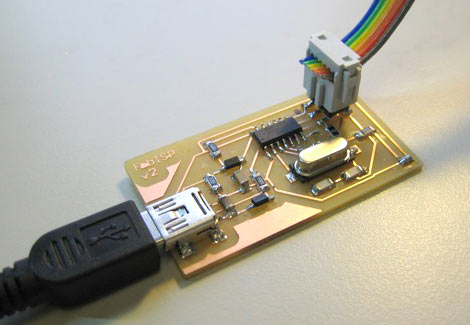
No, it’s not an extra from Wall-E. “QB” is the latest telepresence robot from Silicon Valley firm Anybots. QB combines two-way videoconferencing with a Segway-style self-balancing platform. The idea is to provide mobility and more natural interaction than desktop-tethered conferencing can provide.
The 35 pound robot’s battery runs for six to eight hours, and the telescoping head allows the eye level to be adjusted to match the user’s natural viewpoint. What looks like stereo vision is actually a single camera on the left eye and a steerable laser pointer on the right.
Shipping this October for $15,000, QB will appeal mostly to businesses with specific telepresence needs. This is half the price of their prior QA model — and in time the technology may reach the mass-market level. Until then, we’ll just have to amuse ourselves by remotely attending meetings with our ankle-nipping Rovio robots.

















